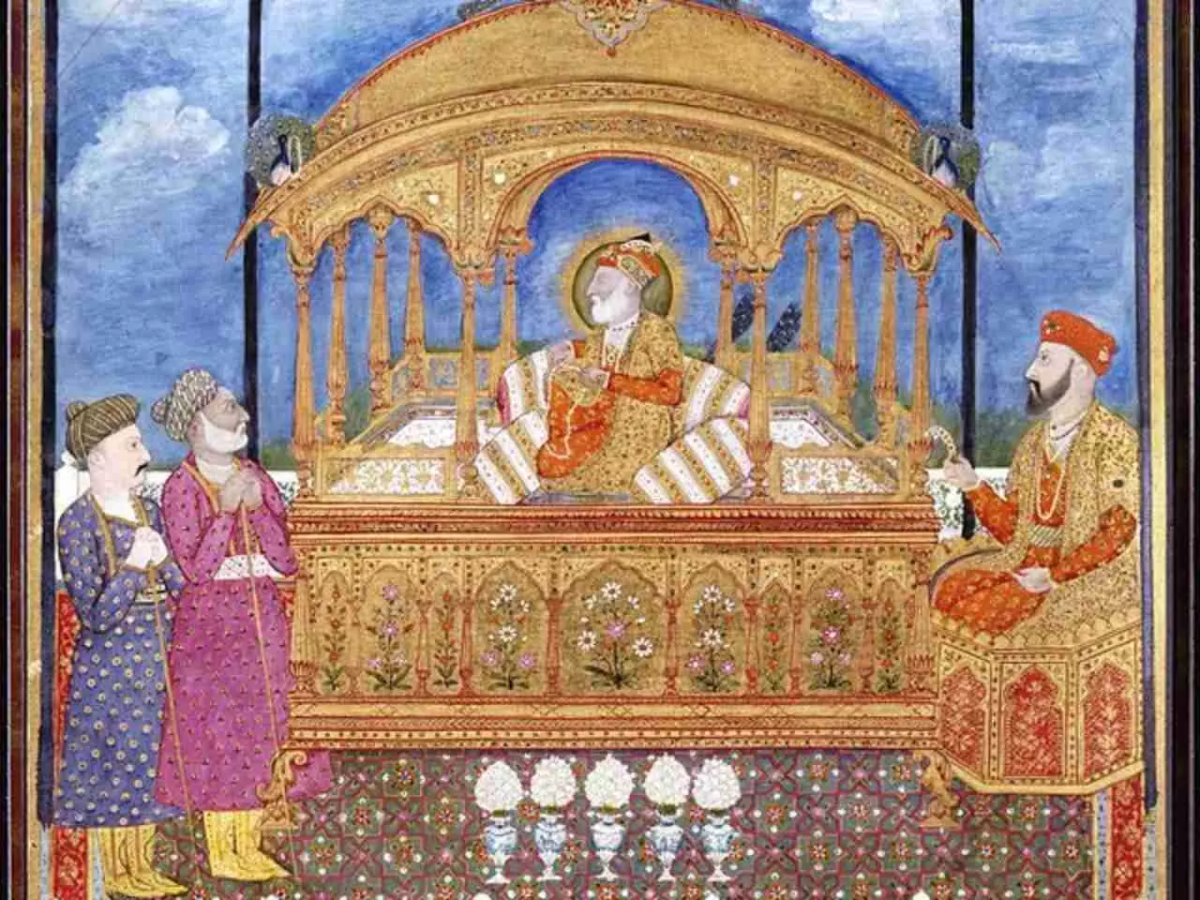Peacock Throne, famous golden throne captured from India by the Persians in 1739. Thereafter lost, it (and its reproductions) remained the symbol of the Persian, or Iranian, monarchy.
The original throne, built for the Mughal emperor Shāh Jahān in the early 17th century, was reportedly one of the most splendorous thrones ever made. It was ascended by silver steps and stood on golden feet set with jewels, and it was backed by representations of two open peacocks’ tails, gilded, enamelled, and inset with diamonds, rubies, and other stones. The throne was seized along with other plunder when the Iranian conqueror Nādir Shāh captured Delhi in 1739. Before leaving India, he had a divan made in the same style and brought both Peacock Thrones back to Iran, only to lose both in warfare with the Kurds, who apparently dismantled them and distributed the precious stones and metals. Later Peacock Thrones or divans (probably reproductions) were made for subsequent shāhs, notably Fatḥ ʿAlī Shāh (reigned 1797–1834). The dazzling chairlike throne used by the two Pahlavi shāhs at their coronations (1926, 1941) was a reproduction dating from the Qājār dynasty.
FAQs
It was commissioned in the early 17th century by Emperor Shah Jahan and was located in the Diwan-i-Khas (Hall of Private Audiences, or Ministers’ Room) in the Red Fort of Delhi.
In 1739, Nadir Shah completed his conquest of Mughal empire by capturing Delhi and took the peacock throne, along with other treasures, to Persia. It is said that it was then dismantled and parts of it incorporated into the Persian Naderi Peacock Throne, now kept in the national treasury of the Central Bank of Iran.
Nader Shah of Persia sacked Delhi and stole the Peacock Throne.

